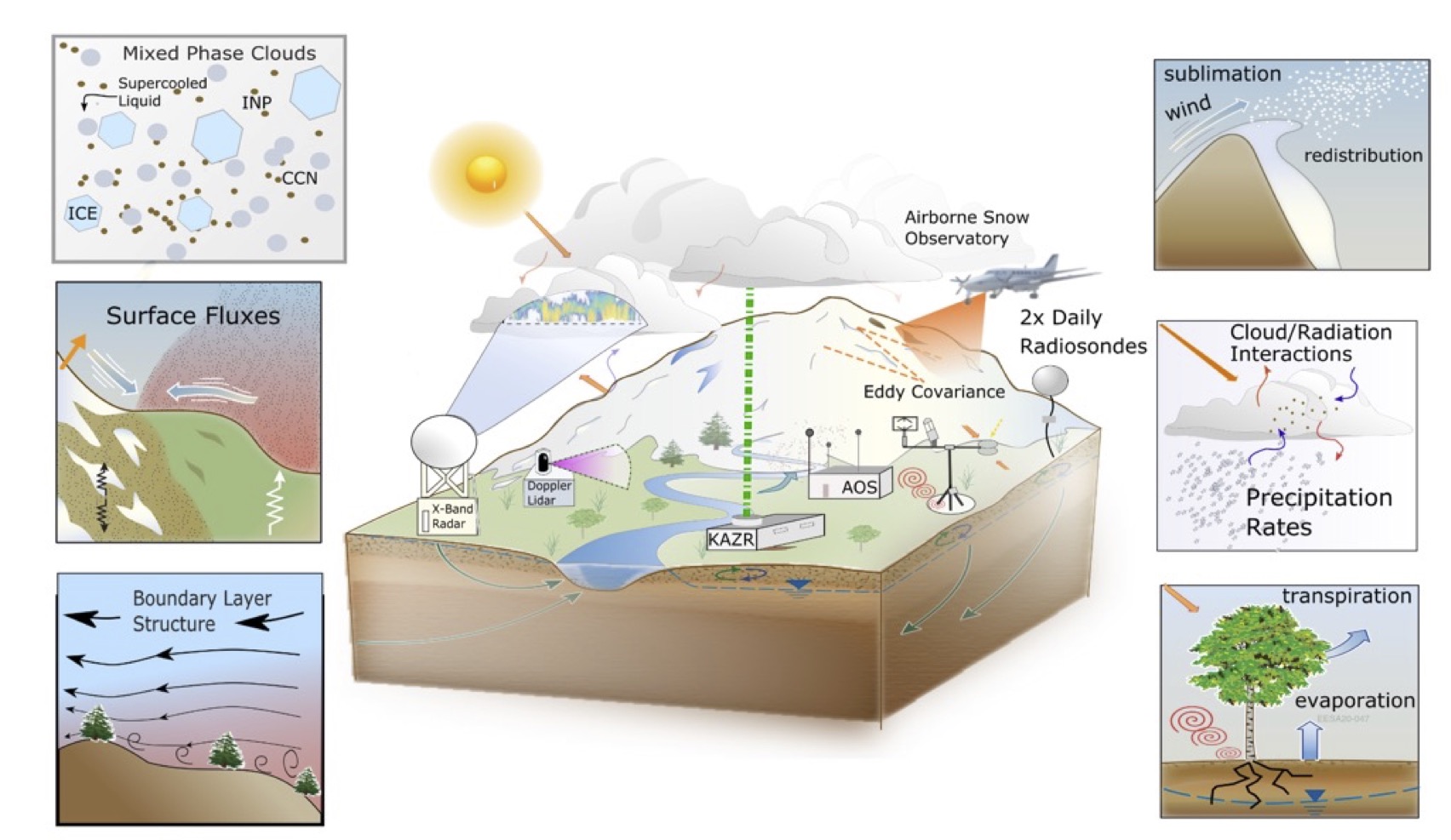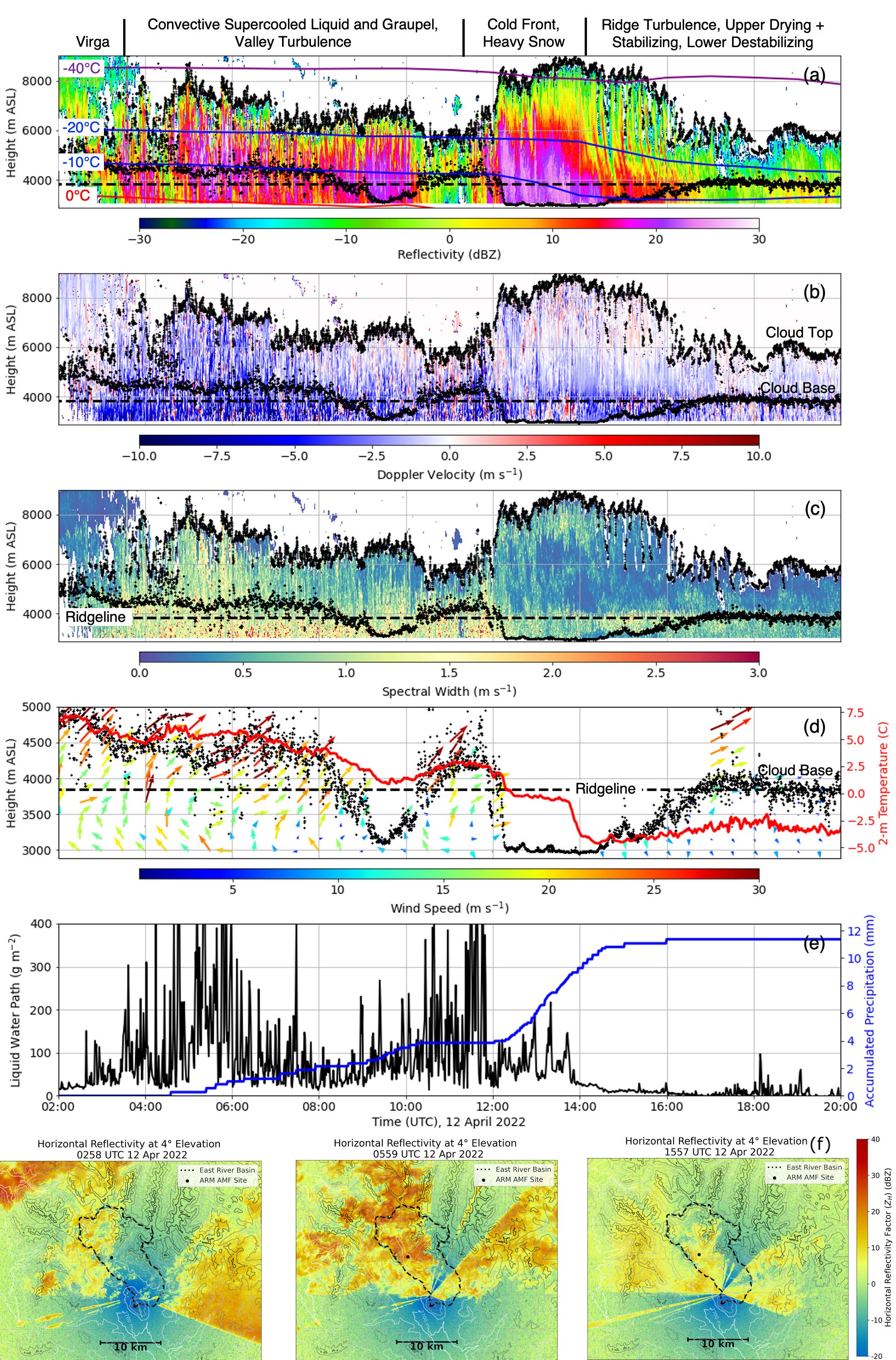The Surface Atmosphere Integrated Field Laboratory (SAIL) campaign
Submitter
Feldman, Daniel — Lawrence Berkeley National Laboratory
Area of research
Surface Properties
Journal Reference
Science
This paper summarizes the instrumentation, science goals and objectives, partnerships, and initial results of the Surface Atmosphere Integrated Field Laboratory (SAIL) campaign. SAIL is a recent field campaign supported by the U.S. Department of Energy’s Atmospheric Radiation Measurement (ARM) user facility and Atmospheric System Research (ASR) program to advance scientific understanding of how the atmosphere, surface, and subsurface work together in the Colorado Rockies to extract water from the atmosphere and deliver it downstream to the millions of people who rely on water resources from the Colorado River.
Impact
This paper serves as a comprehensive source of information about SAIL, both for the scientific community and general audiences. This ambitious field campaign has produced hundreds of measurements and catalyzed many additional inter-agency partnerships, all focused on how the atmosphere interacts with mountainous watersheds to produce critical water resources for the West. This paper serves as a reference for the numerous activities that SAIL led and catalyzed.
Summary
The SAIL campaign represents an ambitious effort by the U.S. Department of Energy’s Biological and Environmental Research (BER) program to advance the scientific understanding and predictability of the mountainous watersheds of the western United States. It does so through the deployment of a large suite of atmospheric instrumentation by the ARM facility and has produced highly detailed observations of the dominant precipitation, aerosol, thermodynamic, and radiative processes in the atmosphere that govern the timing and amount of water availability in these watersheds. Because water resources in the West are principally governed by how processes impact the surface energy and mass budgets across seasons, this paper summarizes exactly how the many observations and partnerships of SAIL have supported and will continue to materially support the advancement of scientific predictive understanding of western water resources.



